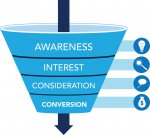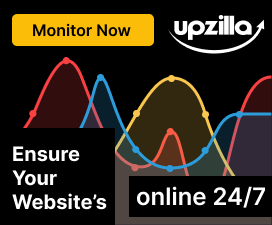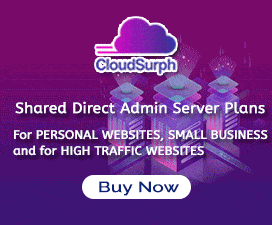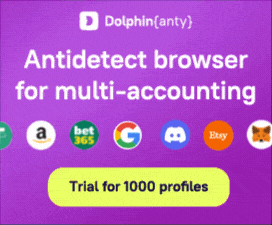EpicGlobalWeb
New member
- Joined
- Jan 24, 2016
- Messages
- 467
- Points
- 0
Making It Big Selling Online 2017

Your key to riches in 2017 online is definitely not in no-risk matched betting, paid online surveys, watching paid advertisements, or any of the utter garbage out there where they bribe you to drive traffic to another website owner who's actually making the real money. The money comes from you solving a major problem for someone else. For instance, the problem an SEO business solves is helping other business owners make more sales by directing buy-ready customers to their website via SEO. Some systems are so effective that increases of sales for any local business can be up to 10-40% on average. I have yet to hear of an unsatisfied customer choosing to solve one of the most major business problems in today's market – which is generating more revenue from old clients or more revenue from new clients.
Your goal should be to offer something of major value to your potential customers and then tell them what you're going to do for them. Tell them repetitively and smile while doing it, then deliver. A lot of internet marketing “pros†constantly preach that it's all about driving traffic to a website. While that's certainly a major part of any online business, that's only 50% of the story. You also need to have a marketable product that is easy for technical and non-technical people to understand exactly what it does. What your product or service does is more important than what it is. For instance, you could say that I sell responsive websites and SEO services. I could tell you that I will rank you first on YouTube or Google. But nobody cares about that – certainly MY target market of local small business owners like plumbers and landscapers or lawyers and dentists don't really care or even understand all the inner-workings of that service.
All the customer needs to know is what will produce a return on their investment, preferably sooner than later. Thus, the value is easily understood and the price is justified. And for God's sake, don't lower your price just to get someone to buy! Much of the time, when you lower your price for a customer, you're telling them that your solution sucks and isn't worth what you originally told them it was worth. Unless you're running some kind of special to get new clientele or you're bringing your product to market for the first time then don't ever lower your price. Instead, raise your price and offer very flexible payment plans.
If I told you that if you could find a way to just talk to 100 people a day about what you're selling and absolutely promise you that at least 3 of them will, without question, buy your product, would you actually get up and contact 100 people today? What would you need to sell and for what price before you make your first $100,000? I know this all sounds like this has nothing to do with making money on the internet, but I promise it does.
The job of the internet and your website in business is to establish credibility, making buying easy for your customers, and solve a problem that you've made known or is already well-known. Your website will probably take care of about 10 – 30% of the sales automatically without you having to do much of anything once you get enough constant visitors viewing your website. The rest of your business involves you picking up the phone, physically meeting with people, networking, sending out emails, and social media messages on Facebook and Linked-In and Twitter and actually asking people to take interest in you and your business. I'm sorry. I know everybody has babied you and told you that you just need traffic and pay-per-click ads on Google but that's just not the full picture.
I suppose it isn't totally necessary to do all of this activity if you just want to have an average-performing, $100,000 a year online business where you solely depend on online marketing measures. If that's your goal, so be it – I'm not judging you! But if you want that million-dollar online business, SOME of your work is going to have to be done offline. 90% of deals are still closed off-line. Much of the selling process starts online nowadays, but most deals are closed off-line or over the phone still, even today. That's because people want real social interaction. We are social beings who crave the attention of other people. Whenever you can deliver a social experience (online OR offline) you're positioning yourself far ahead of your competition already. To illustrate further, consider my statistic earlier of the 100 cold-contacts required for 3 sales. That's an off-line statistic. The same 3 sales online might cost about 1,000 visits, the online variant of a “cold-contact.†So, yes, with enough qualified traffic online I suppose you could technically bi-pass the need for off-line salesmanship. My question to you is, why would you want to do 10 times more work?
I came to this realization with my own business. I realized that there were other web-development agencies near me. In fact, there are still about 20 registered web designers in my immediate area. There are another 20 SEO agencies. None of them market themselves off-line. That means they're literally leaving 50% of the market on the table for me to go grab. They're so engrossed in making themselves the top-guys online that they completely forget the still-50% of people (and businesses) who don't have a website at all or can't be found online for some reason! These businesses aren't online now and they're not looking for SEO services because they've never heard of SEO services before. They have no clue what can be done for them and I'm the only one bothering to tell them in my area. Therefore, the website itself only has one focus, a much simpler one, which is to maintain the appearance of credibility and serve as an informational brochure and payment processor. SEO personally not needed.
Chances are that you will find yourself in a very similar situation when you develop your marketable solution. Referring to my semi-rant on another post earlier about there being so much money in the U.S economy right now, 50% of my market in my state is worth approximately $25,000,000 total. Are you still looking for online surveys to fill out for $75 a day? Do you still think saving money from your job is the answer? Let me ask you, if you got a master's degree in college and got the top-paying job at a company of your choosing, how long would it take you to make $25,000,000? For me, it only takes as much time as it does to reach and contact half of the market I'm in. There are only about 30,000 qualified businesses I can do business with in my state, and at a minimum rate of 100 contacts per day, that doesn't even take a year to talk to every one of them. And at 3 sales per 100 contacts, that's a fairly quick way to earn 5 times more than what current master's degree graduates make in an entire lifetime.
Online Business: Product or Service?
Should you go product or should you go service? You should go problem. Service-based businesses are certainly a lot easier to run on average because you don't have to deal with manufacturing, inventory, sales taxes, shipping, shelf-life, etc. Of course, you don't have to deal with any of that when drop-shipping your products either. Therefore, go for the jugular and solve the problem. Don't busy yourself about product, service, or trivial things that don't matter. Research for a week or two about what has historically been a problem for people in your community and businesses around you. Generally, though, you can bank on the following 3 things which will always create value:
Save your customer time.
Save your customer money.
Increase customer revenue.
The rest of your business will be made up of details surrounding how you bring to market the aforementioned solutions. You can solve a problem tangibly or intangibly. For example, t-shirts are a tangible product. Your customer can see it, touch it, and use it. A new way of thinking, such as an educational material like this article, is not something a customer can physically touch. This article is an example of an intangible product. Most services are intangible as well. When selling either, your key points of emphasis in your sales pitch, website, and landing pages will be the emphasis of the problem and the hope of your solution. Excellent-selling products and services also do their best to appear unique by showing or telling the customer that they understand their unique situation(s) and build a relationship based off of that – this is brand loyalty in the making.
A great example of this is YouTube Red. Google knows that the vast majority of cell phone users use YouTube to listen to music while at work, walking, or going for a run. Often times, the song will frequently stop or start on a new track because the person listening to the music is moving and the cell phone will pause or skip due to bumps during movement. Google's response to this problem was YouTube Red, a paid service that allows people to listen to YouTube music while the cell phone is in lock-screen mode, eliminating the chances of music stopping at less-than-opportune moments. They are emphasizing the problem with their ad timing and ad placement – usually right before a song you want to play starts. They appear unique and attempt to build a relationship by saying “never miss a beat again†or whatever catchy one-liner they're using now – the point is their message to you is “we understand your pain, let's solve it for youâ€. And your hope is that you will no-longer be frustrated by interrupting and sudden “music stops.†Oh, and as a bonus, the “bring to market†price is free, followed by a monthly subscription commitment after the first month. Notice they aren't closing you on price, but on the solution, and they are only lowering the cost of the solution as an introduction to their services for new buyers. Genius!
What You Absolutely Need For An Online Business Right Now
A website. I don't need to waste a whole paragraph to tell you that you need a website. Specifically, you need an SEO-optimized website that is beautiful with big words, easy colors, and responsive in design. For those of you who don't know what responsive means, it means that your website changes its own layout dynamically in real-time to perfectly fit the size of the screen that the viewer is reading or watching your content on. Although this statistic changes regularly, at the time of this writing, about 70% of online participants browse the internet through a cell phone. The other 30% use a regular computer or a tablet. Your website has to look good on all those different devices and be easy to use.

A consistent call to action is also required. For you this may be a “fill out your email†form, a phone number, or “download now†button. Whatever you “always†want the customer to do, make a consistent call-to-action for it on every page. You can also sneak in call-to-actions inside of contextual links within your written content. These contextual links are links that appear inside of written content that look like they should be there and could exist without being a link yet still appear natural. These kind of calls-to-action are best-suited to further sell your visitors on a supporting idea that will lead to a buying decision somewhere else on your website. Below is a quick list of call-to-action examples:
Phone numbers
Forms
Buy Now buttons
Learn More buttons
Contextual Links
Email Blasts
Image Sliders With Flash Sales or Product / Service Benefits
“Chat Now†customer support areas
Social Media Share buttons
The famous “Click Hereâ€
In traditional sales it takes anywhere between 5 and 12 contacts with the same prospect to close a deal, particularly in B2B sales (B2C sales are a little easier to sell in my opinion, because they don't get sales calls as frequently and therefore don't know how to handle sales rebuttals). In fact, within 5 and 12 “asks†you will close 8 out of 10 deals. The vast majority refuse to persist, however, and give up on the first “ask.†What a conversion-centric and SEO optimized website does is automatically accomplish at least half of these contacts for you. Typically, a customer will visit your website a few times before actually buying something.
That is why your website needs to be as content-heavy as possible with engaging things to do on it and up-to-date, informative and/or entertaining material.
The First Sale
First sales are the small-ticket items on your website that your new visitors generally buy first. This article although free, is an example of a first sale. You read this article because you read my other content and trusted it. After you finish reading this , you will think about its content and you'll think about me when you're ready to buy a web-development project. You'll also think about this forum as an authoritative place with knowledgeable people in it. The goal is to create a sales-funnel and brand-loyalty. For whatever you decide to get into, it'll likely follow this path for your website's visitors: read the content, watch the content, verify the accuracy of what you read by talking to people you know and trust, make a small “test purchase†to get more content (such as a book, paid or free with email sign up), buy the high-ticket item. There are absolutely no shortcuts to this. Most internet marketers simply say “find your niche and promote it.†That's close but no cigar. That's only the first step of what you have to do. You want to find creative ways to put yourself in the minds of your best prospects constantly and memorably. And you want to do it 5 to 12 times per person!
First sales don't always have to cost money. Sometimes a first sale on the internet is actually just a registration form to collect email, name, and phone numbers. At the very least you want their email, but if you can get a phone number and name, that's gold for later. This kind of first sale assures you that you've gained a valuable prospect who is interested in what you sell. Warning: do not try to bribe people into signing up by offering them an irrelevant downloadable. I see this all the time where internet marketers offer a free e-book, gift card, coupon, or some kind of item that isn't totally relevant to what the site's main product or service is about. Your downloadable item should essentially act as a very detailed sales brochure in disguise. If you've chosen an e-book downloadable then you can essentially sell the customer again, engage them harder as if you had an hour in-person to sell your product, and be assured that they've gained interest. The same goes for demo software or free trials. All three options are excellent employments of the first sale.
One major and often overlooked way to measure the success of a downloadable item is to place a second call-to-action within the e-book, trial, or demo. For your website, this is as easy is asking the reader, visitor, trial-experiencer, (we'll refer to them as prospects for now) to visit a secondary link that adds a benefit to their current experience. This may be something like “for $1.00, get an extra week of trial†or in an e-book “call my office for a free consultation about Chapter 2.†And you'll know it worked because your prospect will buy another week and your caller will ask about that thing in Chapter 2.
The Second Sale
If you're a B2C business you'll quickly realize that 20 out of 25 of your visitors are broke or near broke. In fact, the average American has less than $20 on him or her at any given time. If you can stretch the average American enough to believe in themselves and have faith enough to step outside of their comfort zone, spending money to get money for once instead of on beer, pizza, cigarettes and a good time, then you've got the average American destined for greatness already. And they'll eventually return the favor with a second sale.
That is your goal in B2C – to enable the average American to save money, save time, or generate revenue (yes – same 3 solutions for businesses) while stretching them to the point where they expect value from what you just sold them. The beauty of this is that often, when a customer has been stretched out of the reach of their budget, they will typically end up buying more than they did before in order to justify their first buying decision. Many people think they need to lower prices on the first sale and then never ask for a second sale in order to “not offend†the customer. The reality is the more you ask for a sale the better. Ask unreasonably so that you stay in the customer's mind when they're ready to buy, especially if they don't right then and there.
The second sale is really your bread and butter. Much of the time, once you factor in advertising, time, etc, first sale items lose money or at least don't make any. Don't forget that the purpose of the first sale was to break yourself out of “nobody†land and get noticed by your prospects and collect what I like to call “interest money.†Then its purpose, now that you're no-longer a stranger, is to hard-sell your product or service again. On your website platform, you're likely at your 5th or 6th contact already. And if you were smart, you would have collected their data on a form so you can ask for their business by email and phone 3 – 6 more times again. Trust me, this is exactly how you will close 80% of your interested prospects.
The main reason people don't buy from telemarketers or salesmen is that neither of them typically ask enough times. Also, they “smell†like telemarketers and salesmen. They sound like they're dialing for dollars. That's your beneficial advantage on the internet – your ability to be helpful and stand out, while also staying in the prospect's mind.
Remember when you were a kid? You would ask your dad for ice cream money once. He said no. You would then ask why. He would say some reason that you had an answer to! You would object and offer a reason why his reason isn't credible and then ask again. Your dad would yell at you at this point and ask, “What do you not understand, the “N†or the “O?†And you would say, “I understand both but...†and you'd ask again. If your dad said no this time, you'd simply just go and ask Mom 5 or 6 more times within 10 minutes. Eventually one of them would break and you'd get some ice cream money – many times this would happen whether they had it or not! And once they give it to you, they'd convince themselves that they've done the right thing by making you happy. They would even go as far as saying they're good parents who occasionally spoil their kid when he does well. And all you did was ask enough times.
Psychologically what's going on with a potential buyer at first ask is they aren't confident in themselves at making their own decisions. Face it, most of your customers are actually not all that confident and can be convinced very easily. Most of your customers were taught to act with reason, be polite, not be rude, be seen and not heard, etc. Most of your customers want to stay within social norms and not stick out. This is all what I call “secret fear.†You can't ever have confidence in perpetual fear and this is exactly what the vast majority of your customers (especially your online customers) experience all the time. Your primary benefit to selling online here is that you're forcibly making them sell themselves because they feel they looked for you rather than you looked for them. You're educating them instead of closing them on a deal – this is information-assisted salesmanship, and it the #1 reason why some make it big and others make it small online.

I would argue that the main reason why “internet marketers†would call this article useful or useless would totally depend on their own ability to break out of the social norms of internet marketing. I don't know of any other article that tells you to call the list of people your website collected, that's why I wrote it – there's a ton of “get rick quick†junk out there when it comes to internet business and I'm sorry but it just doesn't work. You'll never sell me that anyone makes millions and billions of dollars pushing affiliate products with pay-per-click ads online. The top 20% spend aggressively on ads and couple it with phone calls, automated inbound lead generation, and then they personally reach out to 1 or 200 people on a daily basis. Quite frankly, the top 20% of all earners do 80% more actions than their same-category peers.
Be Better or Be Louder
There's an old adage that says, “build a better mousetrap and people will come to you.†The meaning, of course, is by making a better product, service, or experience you will get more sales just by it being better. I agree with this about 50%. One reason why I don't fully agree is because of Bill Gray's. Bill Gray's is a burger shop in Rochester, NY that I used to frequent as a kid. Bill Gray's sells, in my opinion, the best-tasting burger in the world. There is literally no burger that I have ever had here in Michigan that even came close to their amazing taste. Yet for some reason, there are only 2 Bill Gray's locations in the world that I know of and they're both 20 miles from each other. If they're the best burger then why aren't they everywhere?
Quite simply, that's because the terrible-tasting and unhealthy McDonald's markets themselves better. There are 4 McDonald's locations around each Bill Gray's location. McDonald's is on the back of public transportation vehicles, bus stations, billboards, newspapers, Google, Yahoo, Bing, magazines, Facebook, Twitter, Pinterest, trucks, cars, direct mail, coupons, you name it. If there's an advertising vehicle, McDonald's is on it. That's why McDonald's makes billions of dollars every year and Bill Gray's makes a couple hundred thousand, maybe – because I never hear anything about Bill Gray's. If Bill Gray's had invested some money into advertising they might have been able to chase McDonald's out of that area with enough tenacity because they have a better product. As you can tell, it's not always better product that works, but also who is louder. You need both to be in effect full-force constantly.
Whatever your industry is, treat it like a war. You have to be the only visible option in your industry. Don't ever shoot for “just enough,†or, like many “internet marketing pros†shoot for - “$100,000 a year.†Facebook is not the only option in the industry of social networking. Not everybody uses Facebook because not everybody's in the market for social networking or business advertising. At the same time, though, 1/6th of the entire world uses Facebook because they've completely dominated the social networking market. If you own a real-estate listing website you need to figure out how you're going to dominate LoopNet. If you plan on starting a social media site of your own, make it better than what's out there. Don't listen to those who tell you to stick to a small niche and stay scared as if the people who own Facebook are gods or something – they're just people. And because they're number 1, they're probably arrogant people too. That's how MySpace fell. If you don't want to start a Facebook-like website then don't. My point is go big and go for the kill of your enemies. Your enemies are anyone in your industry that you do not have considerable gain over pertaining to market share. Treat it exactly as war. Exploit every single weakness they have, capitalizing on their problem while reminding your new customers of the hope of your solution.
Global Verticals: Small To Big
My company specializes in helping small, local business owners become the first-seen company in their city. It's essentially local advertising. Once in a while I'll talk to a company in a very small town and determine that being first in their area actually isn't that much of a gain in local market share for them. For instance, a dentist in a small town of only 2,000 people likely only has 50 or so customers that can even visit him in a given month, with about 10 or 20 of those customers looking for a dentist online. In that specific case, the solution is not to double-down on the local SEO budget, but actually the national SEO budget.
What I'm saying here is that the problem this dentist is having is too small of a market to really become wealthy as a dentist by only focusing locally. The strategy I would participate in with him at this point would be to be number 1 in all of his immediate surrounding areas and then come up with a product that he would sell as a global vertical which compliments his service as a dentist. It may be dental consulting or teaching services, a better toothbrush, dental practice business courses, patient appointment software – all things which can be sold online that compliment his existing service-base and allow him to expand on a much larger scale than his current surroundings allow him to by only marketing to his small, 2,000 person market. In today's economy, you should prepare ahead of time to be versatile like that.
I would bet that educational material is going to be huge in the coming years because of the student debt bubble emerging now. It is too easy for people to get into colleges right now and even easier for them to go into debt doing it. Most kids these days (including myself at one point) had no idea what we were going to college for. We all assumed that we were just doing right by out parents and working hard to that “safe, secure job†in the future. Upon realizing this, we're now all waking up to the fact that we can educate ourselves with books, the internet, mentorship, and on-the-job training if needed. That being said, a major opportunity for small businesses will emerge out of this by offering informational products which couple their main source of income and it's something that every business can sell. If you're a used car dealer, it's “fix-it†manuals. If you're a restaurant, it's recipe books. If you're a real-estate agent, it's real-estate investing material (all of these things make excellent first-sale products as well).
Figure out what your “compliment†product or service is and start coupling it with your business – online or local – immediately. Then market it heavy every day for 1 year. In the next section we are going to focus completely on all the ways you can advertise your business in very big ways that cost no money. With enough focused tenacity, you can compete on a huge scale, especially right now in the 2016 economy. The majority of businesses are retreating and conserving right now, essentially waiting things out as if that's going to help them in some way or preserve them until “things get better.†If you don't have a giant advertisement budget then you can still achieve ad-budget-like results by increasing your promotional activity relentlessly. Your goal, if you can't sell to every single person, is to be the only visible option in your industry so that when your prospect IS ready to buy, you're the first one they call.
Major Promotional Activity For No Money
This section is a simple break-down of online marketing avenues you can take advantage of when bringing your product or service to market. If you're 100% online, then this is a double-benefit section for you because all of these avenues also qualify as a back-link. A back-link is simply a link to your site from another site. Every time someone clicks on one of these you get a “vote†that signals to Google that your site is important and authoritative, thus ranking higher as a result. Here's a quick list of where to publish content in order to get back-links, and then we'll discuss which of them are the most effective, what you should publish, how much and why.
YouTube
Vimeo
Google+
Your Facebook Business Page
Similar Facebook Groups
Similar Websites w/ Comment Sections
Relevant Forums
Relevant Profiles
Guest Posts
Other Websites You Own
Other Websites Your Friends Own
Article Directory Sites
In general, you want to publish content on any website that allows content to be submitted to it and you want to publish material that is going to help its viewers make a buying decision for your product / service or at least influence them to associate yourself in their minds.
If you're a true do-it-yourself type of person then your task is a tremendous one at this point. You have to post something in all of these categories a minimum of once daily. The exception is Twitter. Twitter gives you the best results when you post to it 5 – 12 times an hour, minimum. More followers = more buyers eventually. Imagine if you had 1,000,000 Twitter followers and you introduce a product to them, perhaps a “first sale†product. All 1,000,000 of your followers are going to see your compelling offer. Suppose your first-sale profit margin was $5 per sale, how many would you need to sell before you made $2,500? per product post? The answer is you would need a half of a half a percent conversion rate. That's highly achievable even in terrible economies. That's only 500 buyers out of a million prospects.
The set up of these social media outlets works best when you name them something that is also a keyword. For instance, instead of your Facebook business page being called “Bob's Roofing†you would name it “Roofing Services Detroit,†last word the same as your target city. Or if you're a national company or not limited by geography then you might just say “Roofing Services.†Once the naming is ready, fill out all necessary sections with your contact information. Make it very easy for people to reach you. Your next task, which could take a few months, is to post the most content, friend, follow, and get followers more than anybody else in your industry, and post, post, post.
Social media based selling, with the exception of LinkedIn, isn't very effective. The main purpose of all this effort is just to show up in a Google search for the proper search term. With time and huge amounts of activity, you absolutely will rank. This is easily another full-time job, but it will result in a handsome bump in inbound leads and sales.
Also, remember this, there are 2 types of back-links – do-follow and no-follow. Google only credits you for do-follow links. Typically on social media sites you will get a no-follow link. However, that still counts as traffic to your website with enough visitors and it still qualifies as lead generation. It just doesn't necessarily help your rankings directly. Everything in SEO is essentially PR and advertising. The main advantage you have over traditional advertising, as I said earlier, is that most of your advertising online is free, and only requires the right amount of dedication. In fact, this is often why 90% of local business owners opt to pay for a managed solution, because they make an attempt and then realize they have underestimated the amount of activity required. If you're running a 100% online-based business and working a regular job at the same time, however, then your extra 40 hours per week should be put into this most of the time.
Attachments
-
37.5 KB Views: 1










